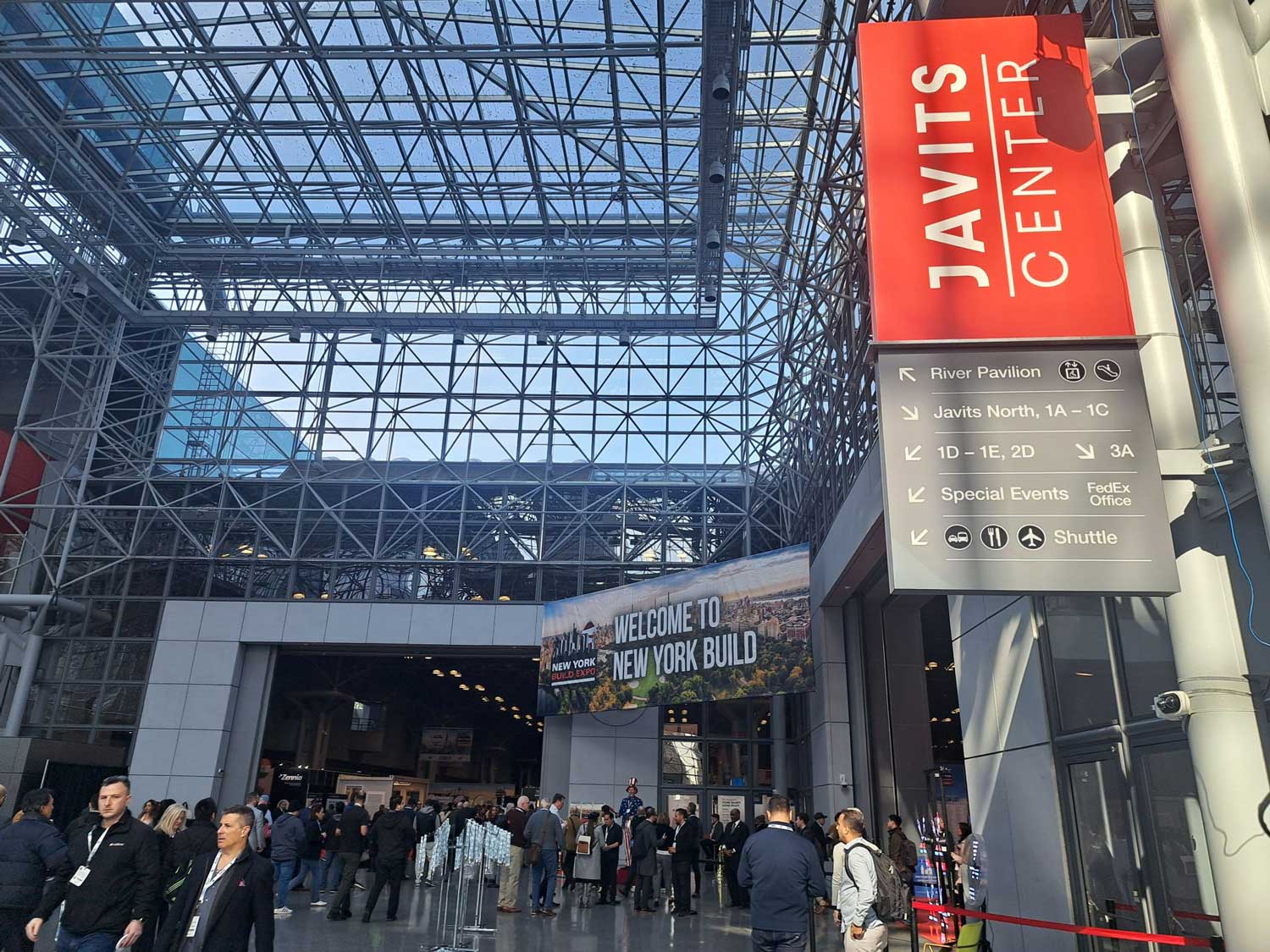
02 May 15 Workplace of the Future Insights from New York Build Expo – 2025
Photo Credits: Donald Markham
RI Workplace attended the New York Build Expo at the Javits Center this past March (2025), and it was full of exciting ideas and insights.
From architects and contractors to tech innovators, facilities managers and designers, we were all talking about where the construction, architecture and interior design industries are heading next.
And the message was loud and clear: AI is already reshaping how we work, design, and build, but it’s just getting started.
Our colleague Donald Markham was there soaking up the energy, the insights, and the big ideas. Here are his top takeaways relating to workplace build and design, hot from the show floor.
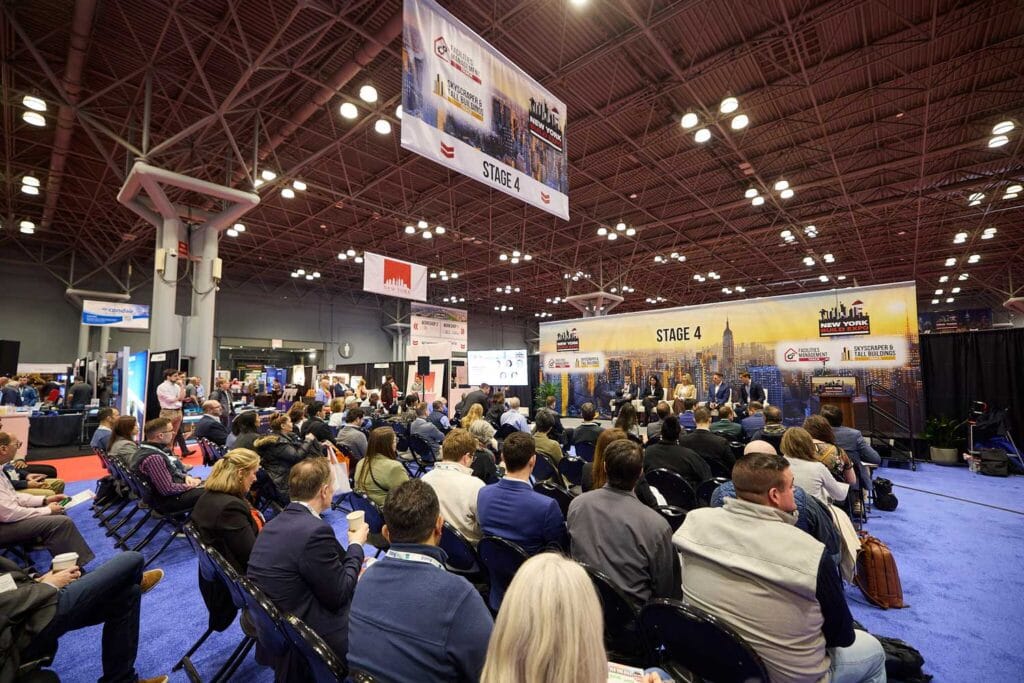
Photo Credits: New York Build
1. AI Is Here : Adapt or Get Left Behind
AI isn’t coming, it’s already embedded in how leading companies design, build, and deliver for clients. The forward thinkers aren’t asking if they should adopt AI; they’re asking how fast. Here are some more AI insights:
- AI streamlines project planning, quoting, client updates, and execution.
- AI is not about replacing people – it’s about giving teams the power to work smarter and deliver more value.
- The businesses that will win are embracing AI as a creative, strategic tool, not fighting it.
By 2030, technology will be even more at the beating heart of office environments, creating spaces that are smarter, more personalized, and more responsive to the needs of the people who use them. Here’s a glimpse into what those future workplaces could look like…
What The Workplaces of 2030 Will Look Like
2. Biometric Workspaces – Environments will adjust lighting, temperature, and tools based on who walks in. Personalization will be expected by employees in the workplace of 2030.
3. Expanded C-Suite – Keep an eye out for the introduction of new leadership roles relating to the work environment itself, such as Chief Wellness Officer, Chief Design Officer, and Chief Places Officer.
4. AR in Leasing – With Augmented Reality (AR), prospective tenants will be able to take virtual tours of office spaces before they’re even constructed and make more informed choices. This is different from 3-D rendering technology which already exists today.
5. Smart Offices – Think AI-powered climate control, retina-scanning access, and curated food options.
6. Flexibility and Well-being – Rigid 9-to-5s are over. The modern workplace prioritizes mental health, breakout spaces, informal collaboration zones and flexible hours.
7. AI Concierge – Need a quiet space? A brainstorm zone? AI will suggest your schedule, seat, and teammates, just like magic.
As AI begins to take on more of a concierge role, helping employees find the perfect environment for their work, our office designs need to support that seamless experience. The focus will be on creating spaces that effortlessly adapt to what’s needed, removing friction, and blending functionality with style. It’s about making the space work for the team without drawing attention to itself. Which brings us to the topic of Office Design and Strategy.
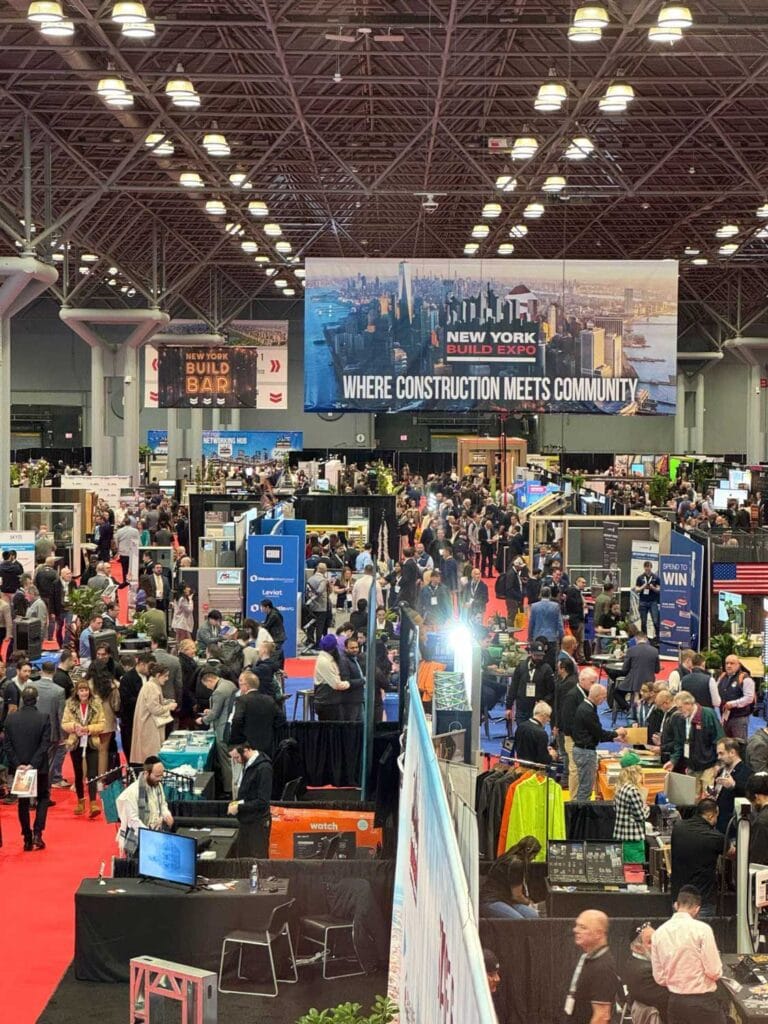
Photo Credits: New York Build
Office Design and Strategy Must-Haves
8. Seamless Design = Invisible Design
“Design is only noticed when it’s done wrong.” A well-designed space feels natural, supports flow, and removes friction from work.
9. Dynamic Workspaces
Don’t be afraid to experiment. Swap furniture. Test layouts. Office space should evolve just like your business.
10. Hybrid and Remote Realities
Satellite offices and coworking spaces are staying. But they must stay on-brand and feel connected to HQ.
11. Location Strategy is Changing
New HQs don’t need to be luxurious campuses. Think compact, strategic locations, such as CVS or Walgreens, embedded where people already are.
12. Class B Office Upgrades
To stay competitive, these spaces need meeting rooms, fitness zones, and solid food options. Forget the spa: just deliver what matters.
13. Creative Tenant Improvements (TIs)
High-end private areas like kitchens or lounges can be repurposed in off-hours for shared use, turning underused square footage into revenue.
As we continue to optimize spaces with creative tenant improvements, the next challenge is figuring out how to bring people back to the office in a way that truly works for them. It’s not just about having a desk to sit at, it’s about creating an environment employees make the commute for.
14. Rethinking “Return to Office” the Right Way
It’s happening, but people aren’t thinking it through. Offices need more:
- Flexible seating and work zones
- Common areas that support casual meetings
- Quiet nooks for phone calls and focus work
- Better flow to avoid people talking over each other
I think we can safely say: the era of static desks is over.
15. AI in Construction and Design Is Real (And Already Here)
- AI is cutting project timelines, improving updates, and enabling better decision-making.
- Auto Gen AI and similar platforms are creating lightning-fast bids and proposals.
- Digital Twins and AI-enhanced BIM models are helping track performance, maintenance, and sustainability in real time.
- Real-time client updates powered by AI create trust and transparency.
As one expert put it: “If you have A) data, B) design intelligence, and C) business acumen, you’ll have long-term job security.”
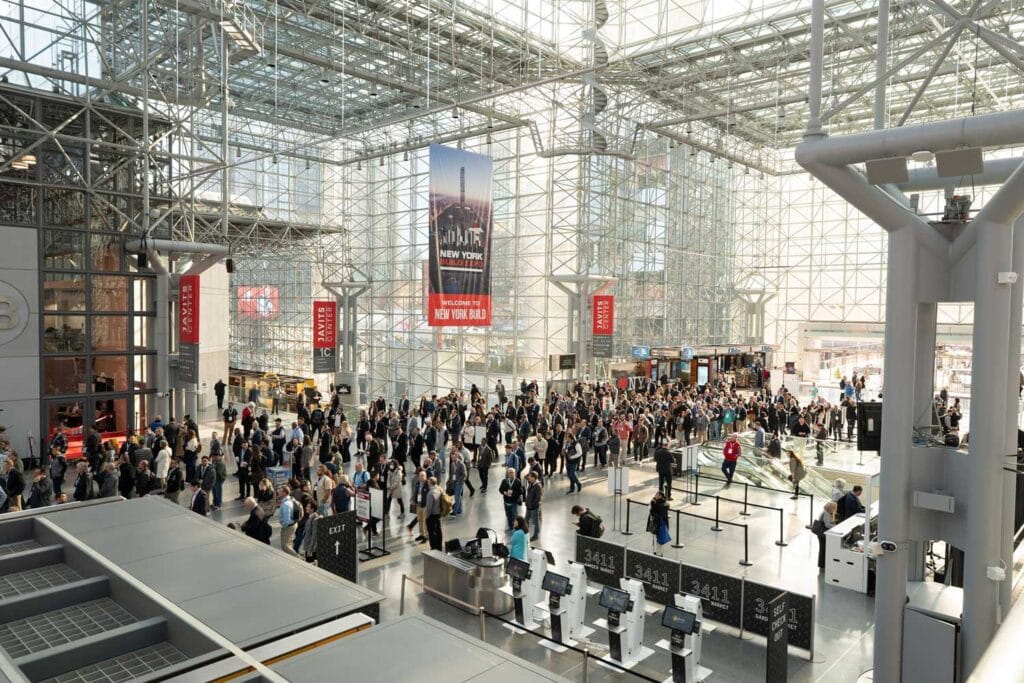
Photo Credits: New York Build
Bonus Insight: Don’t Be Boring — Be Bold
The workplace isn’t just a place to work. It’s a place to be inspired. Incorporate:
- Local and digital art that changes seasonally
- Innovative acoustic panels
- Robotic layout tools during pre-construction
- Bold woodworking and indirect lighting
- Frameless diffusers that disappear into the walls
“Do something creative in your new space. Try something daring.”
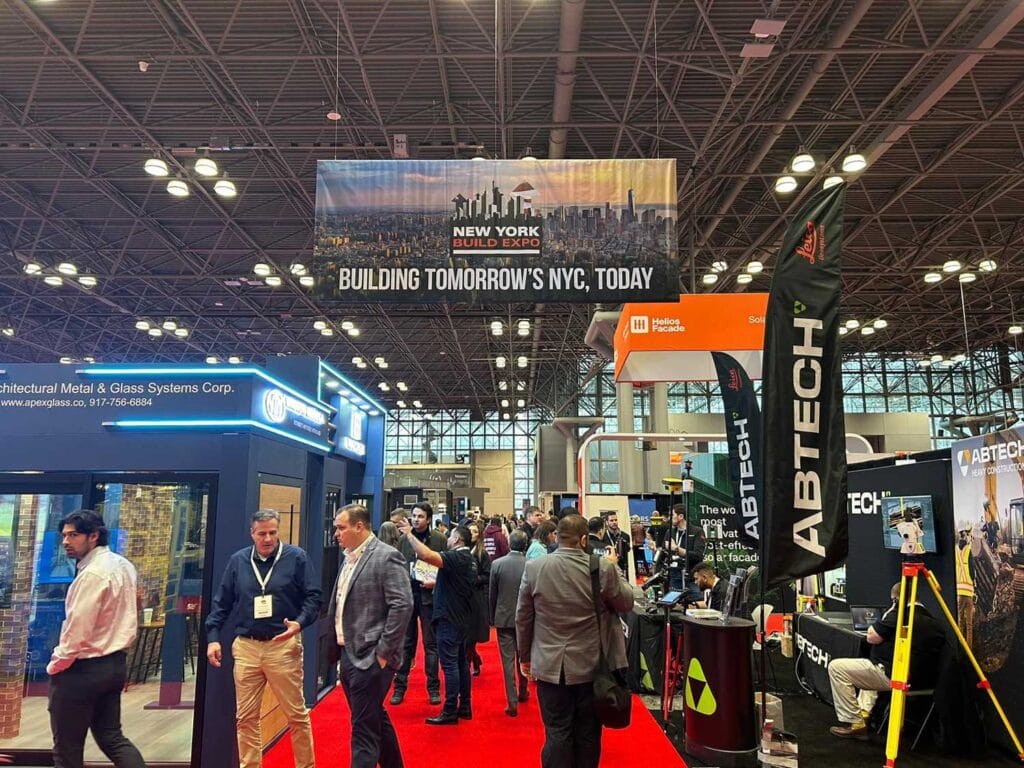
Final Thoughts
The takeaway from New York Build Expo 2025? The future of the built environment is human-centered, tech-forward, and never one-size-fits-all. Whether you’re designing a workspace, retrofitting an old office, or planning a new build, embrace the tools that help you work smarter and create spaces people love.



















